The apricot Goldendoodle is a great furry companion for all people who prefer owning a lap dog as a family pet.
They have a solid temperament, and plenty of love for their owner and family, so don’t be surprised if they follow you even to the bathroom.
Although this might sound more like a con, it’s actually cute how much affection they have for their master.
If you’d like to own an apricot Goldie Doodle, here’s what you need to know before you get one.
What Are Apricot Goldendoodles?
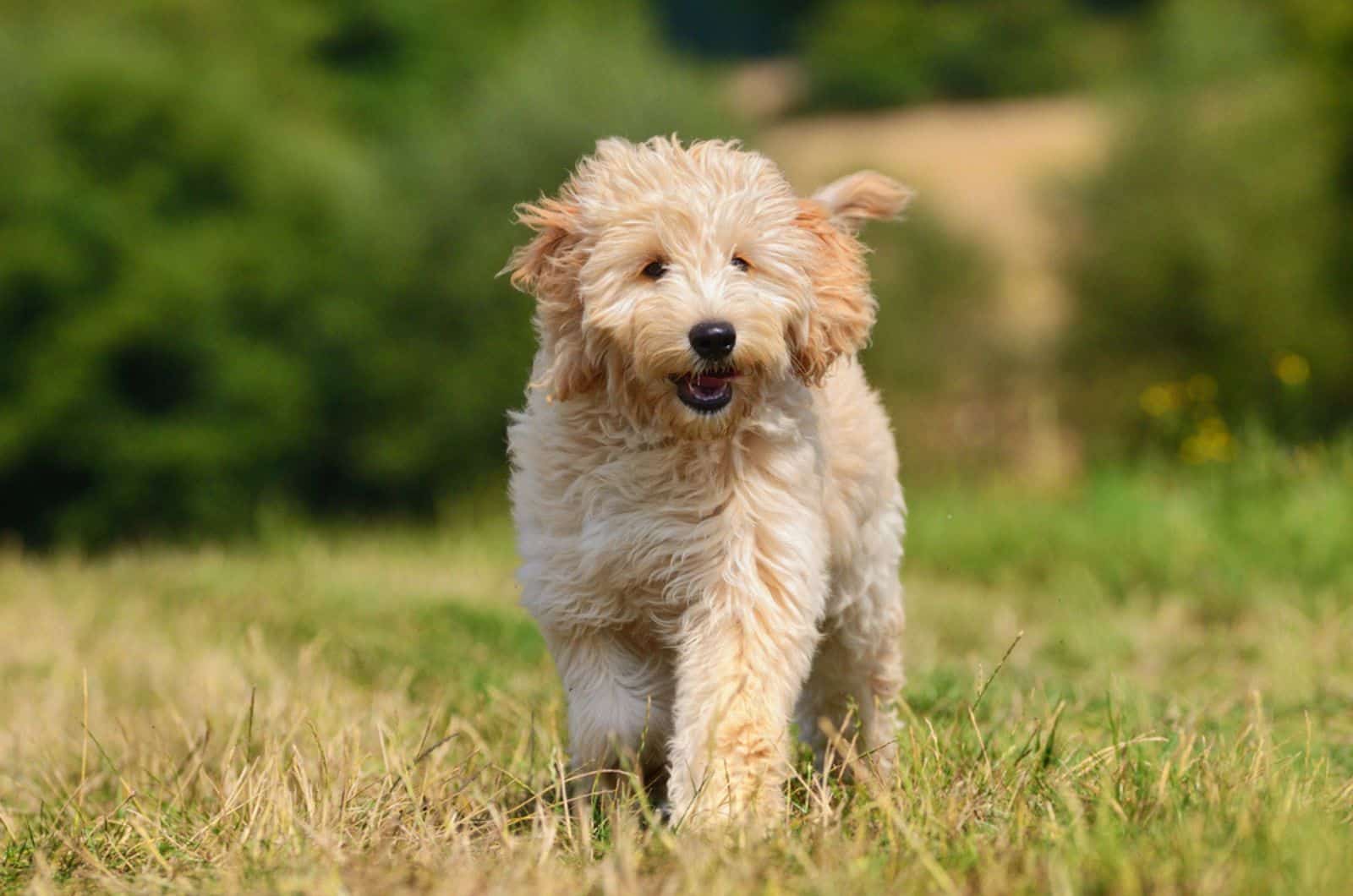
This type of Doodle breed has two of the most popular doggies in the world for parents, so it can be said that this crossbreed is one of the “A-listers” of the canine world.
Both male and female Golden Retrievers are famous family pets that are known for their kind demeanor and great interaction with both children and adults.
On the other hand, Poodles are probably one of the cutest canine breeds that have often been described as Teddy-bear-like pooches, especially those with red, chocolate, blue, cream, or apricot coat shades.
Considering that both of these purebred canines have sweet and gentle temperaments, their offspring can be described as wonderful pets and friendly companions for all families.
F1 Goldendoodles (first-generation), which is the official name for these mixed-breed pups, are indeed beautiful inside and out, especially the Goldendoodle puppies that are found in shades such as red, chocolate, silver, apricot, and other more unusual hues and patterns.
One thing that will make the majority of allergy sufferers happy is the fact that apricot Goldendoodles can be hypoallergenic. Still, their hypoallergenic trait depends on certain genetic conditions, which we’ll discuss later in this article.
Are Apricot Goldendoodles Acknowledged As A Breed?
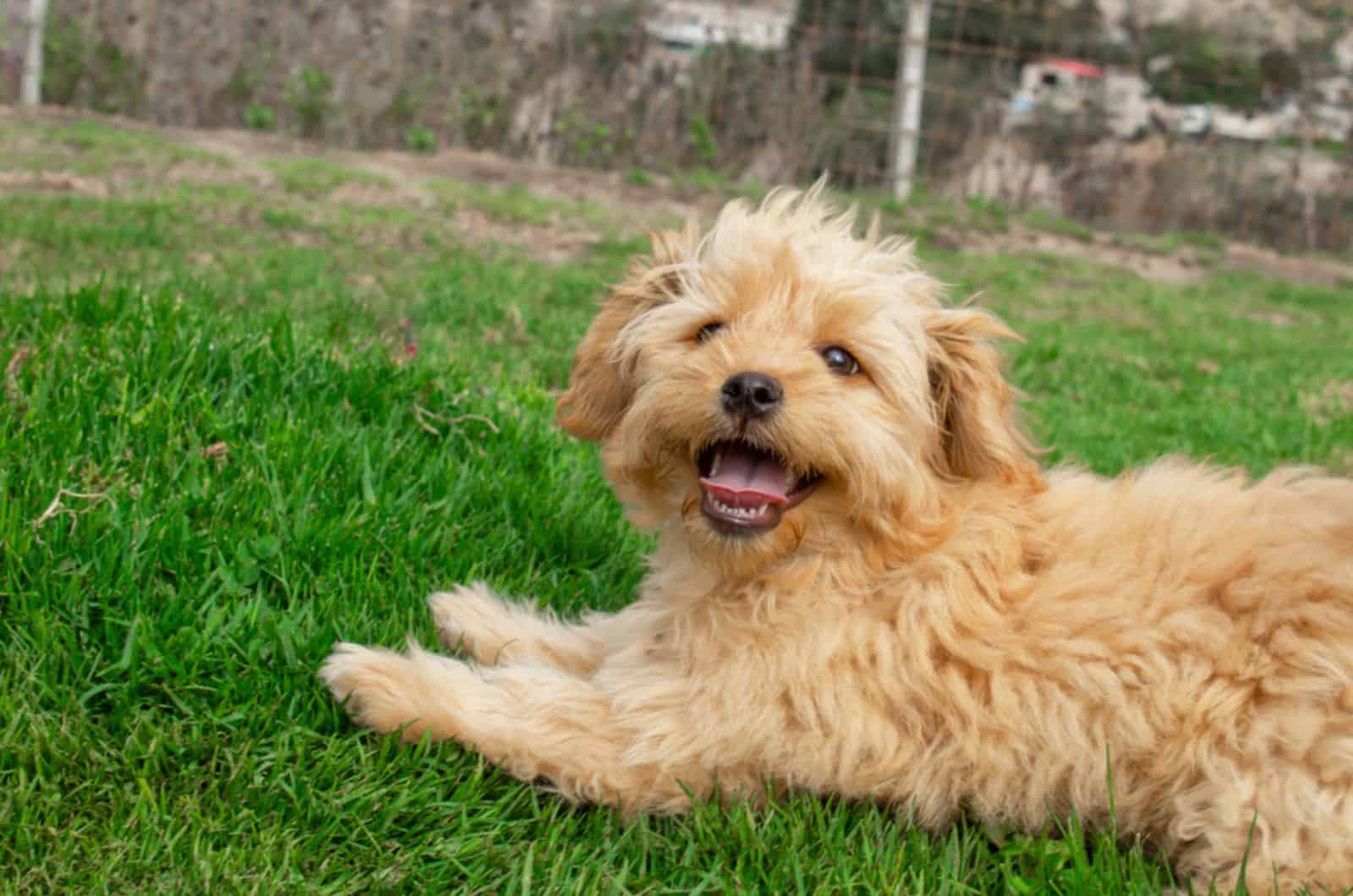
Unfortunately, the answer to this question is no. However, their recognition does not depend on their shade, but on their genetic background and breeding.
Since Goldendoodles, and other Doodles for that matter, are recognized as hybrid canines, it’s impossible for them to be recognized by any of the respectable canine institutions.
Organizations such as the American Kennel Club (AKC), the United Kennel Club (UKC), and others acknowledge only purebred canines as standard dog breeds that can compete in dog shows, conformation events, or any other dog competition.
There has been an ongoing discussion about mixed-breed pups and their recognition as standard canine breeds mostly because of the controversy related to breeding ethics.
Still, if you own (or plan to own) an apricot Goldendoodle as a family pet, the AKC registration rights and recognition won’t be of much importance to you. However, if you want to take your pet to dog shows and competitions, you might want to get a purebred dog instead.
Can Apricot Goldendoodles Have More Than One Hue?
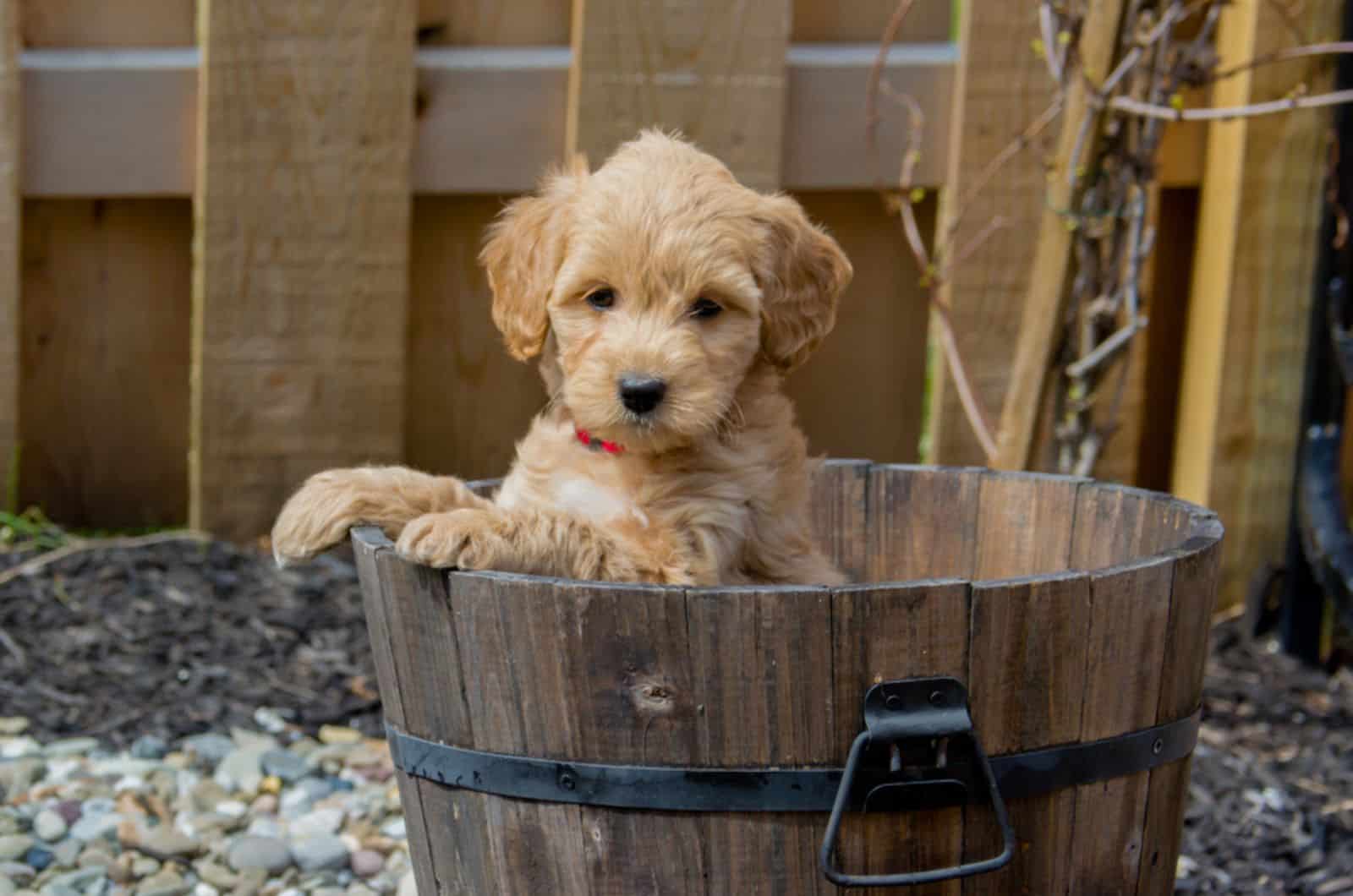
When one mentions apricot Goldendoodle, the first thing that crosses everyone’s mind is a cute, curly pup in an orange-yellowish shade.
However, not many people are aware of the fact that apricot Goldendoodles can come in different shades as well. Although the difference is not as big as the one between a white and a black Goldendoodle (for example), it’s big enough to be noticed.
This variation in hues makes these pooches look even more beautiful and unique in their appearance.
Although a puppy in a single shade of apricot is a charming hue, there are a number of other color combinations that are equally adorable.
The apricot and white Goldendoodle is, by far, the most frequent shade combination for this crossbreed. In most cases, the primary hue is apricot, with white patches that might appear on the canine’s face, paws, or chest.
What Are The Other Shades Of An Apricot Goldendoodle?
Without further ado, here are some of the hues in which these apricot beauties might appear:
• Light shade – Puppies that come in a lighter shade of apricot hue are sometimes mistaken for English cream Goldendoodles because they’re quite similar, but not completely the same.
As puppies, Goldendoodles often have a darker shade of coat – a vibrant apricot hue, in this case. However, as they grow older, the shade of their fur might change into a lighter version.
In the case of apricot canines, this shade might be almost as light as tan or cream hues.
• Dark shade – A great number of Goldendoodle puppies change the shade of their fur as they mature, but there are always exceptions, just like for everything else in life.
Therefore, there are certain puppies that remain the same shade throughout their whole life.
Those are usually Goldie Doodles that don’t go through the coat transition, or they simply don’t shed as much as other puppies.
• Apricot tuxedo – I’m sure that a Goldendoodle would look simply adorable in a tuxedo, but that’s not what this shade is about.
Tuxedo Goldendoodles in apricot hue are pooches that have a solid apricot shade on their back and head, with white markings on their chest or belly area and legs (paws, in most cases).
These markings make it look like the Goldendoodle puppy is wearing a tuxedo; hence, the name for this pattern.
• Cream shade – I know I said earlier that it is a misconception if you call a light-shaded apricot Goldendoodle cream, but in some cases, cream indeed might be a variation of the apricot-colored fur.
A Goldendoodle’s coat goes through significant changes as they turn into adults, which is why they can be diluted even into a lighter shade of light apricot, known as cream.
The best way to differentiate between light apricot pups and cream-colored apricots is to examine their coat. If you notice darker, peachy stripes or patches on their fur, your pup is of apricot cream hue.
The main reason for this is the fact that apricot cream pups don’t lose all their darker puppy fur during the coat transition.
• Abstract – All shades of apricot hue are quite similar, so it’s no surprise that they easily get mistaken. The same goes for the abstract color variation, which is quite similar to the white and apricot color.
The main difference between these two is that abstract Goldendoodles have more than half of their coat covered in solid apricot, with white patches only in certain places.
Do Apricot Goldendoodles Change Shades?
Almost every Goldendoodle pup goes through major changes as they grow up. First of all, they get taller and heavier, but their coat also becomes much denser and stiffer.
However, the texture isn’t the only thing that changes during the coat transition process. The majority of Goldendoodles also go through color shifts as their shades dilute into lighter hues.
As a result, apricot Goldendoodles frequently end up with a coat that is more cream than apricot in appearance.
Of course, there can be certain exceptions, so color shifts don’t necessarily occur in all pooches.
A Goldendoodle breeder might be able to tell you whether or not this is a possibility based on the characteristics of its parents, but bear in mind that genetics is notoriously difficult to predict.
Apricot Goldendoodle Fur Textures
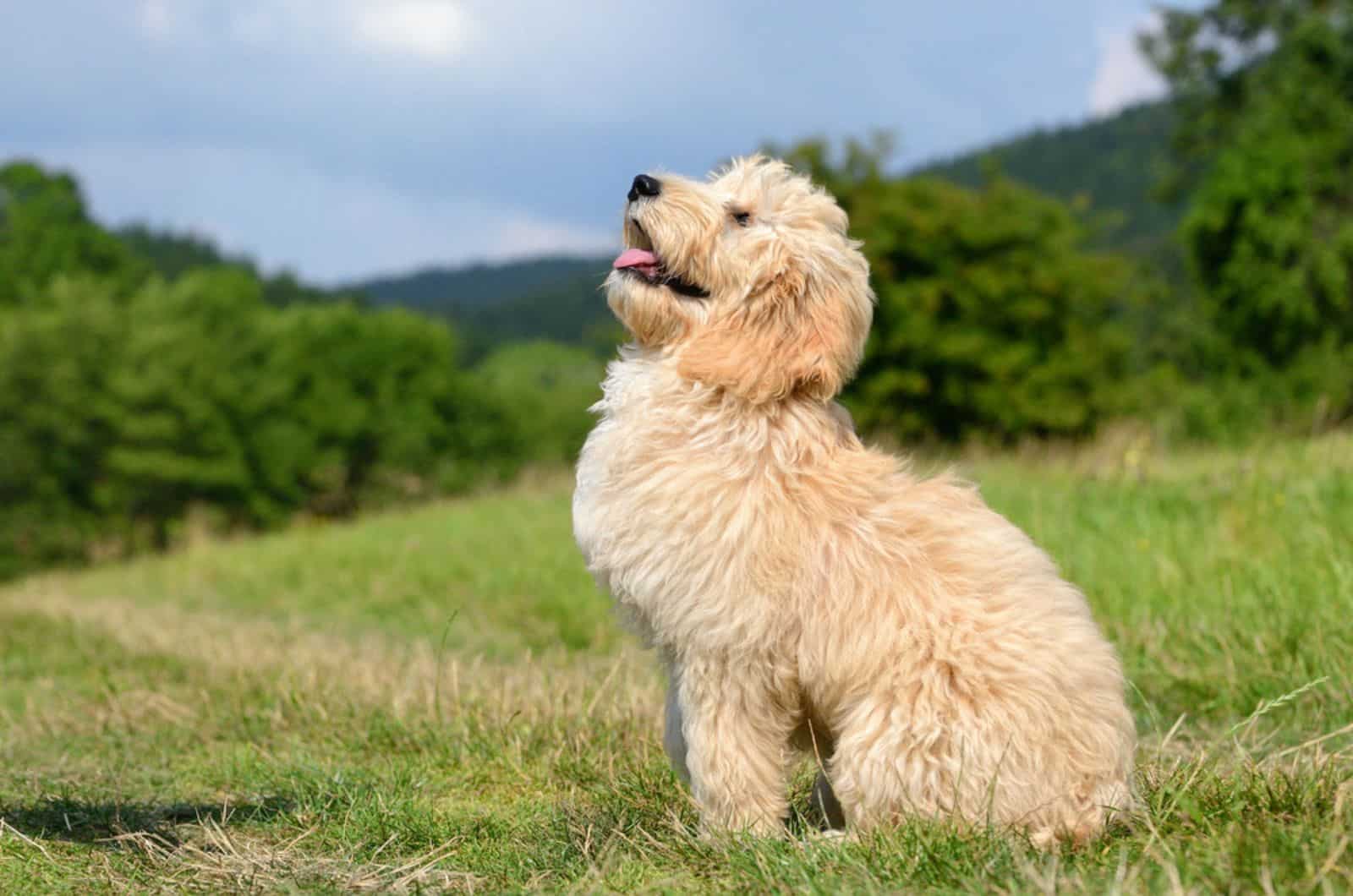
The texture of a Goldendoodle’s hair might not always be the same, not even for puppies from the same litter.
The main reason for this lies in the genetic pool of individual puppies. Therefore, some pups inherit the Poodle type of fur, while others might get a coat more similar to the one of a Golden Retriever.
Although the majority of dog experts and breeders recognize wavy and curly hair textures, Goldendoodles might appear with straight hair as well.
Therefore, it’s not only the color gene that can be passed down from parent breeds to their offspring, but also the hair texture genes.
In the next few paragraphs, we will discuss the types of a Goldendoodle’s coat in more detail:
Wavy Texture
This type of coat is one of the most common ones among Goldendoodles in general, including apricot puppies. The wavy texture usually appears when the puppy inherits the curly-hair gene from one parent and the straight-hair gene from the other.
Wavy Goldendoodles are popular because they don’t require much work during brushing sessions. However, they’re not exactly low-maintenance canines as they shed more than curly pups.
Still, they have much fewer tangles and mats than doggies with curly hair.
Curly Texture
The majority of reputable Goldendoodle breeders try their best to breed these types of puppies as they’re extremely popular among dog lovers.
But, that’s not just because of their fluffy and adorable Teddy-bear looks, but also because of the fact that they’re considered hypoallergenic.
It’s believed that curly Goldendoodles shed the least of all coat types, but that might not always be a bonus. Since their curls are quite tight and dense, these pups might have lots of knots and tangles throughout their fur.
The majority of excess hair, dander, and dirt end up trapped in their coat, which is why they should be brushed regularly.
Straight Hair Texture
This is one of the most common hair textures that appear in Goldendoodles, and one of the least sought, according to the experiences of breeders and the demand on the market.
However, that’s not the only reason why they’re rare. Straight-haired Goldendoodles aren’t so easy to produce either as not many Doods inherit the coat gene solely from their Golden Retriever parent.
They are easy to maintain as these pups don’t develop knots, tangles, or mats. Still, they shed almost as much as Golden Retrievers, which is why you’ll need to vacuum your house more often, even if you brush your pup regularly.
RELATED: Are Golden Retrievers Hypoallergenic Dogs?
Apricot Goldendoodle Generations
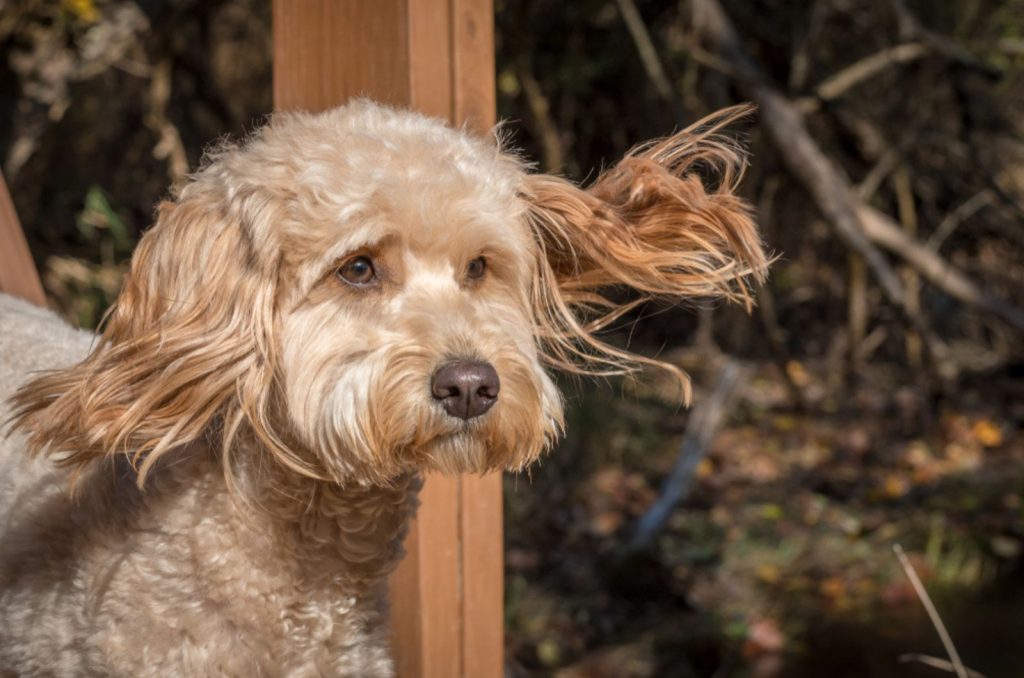
Goldendoodles, including apricot ones, can appear in several generations depending on the types of parents that are being bred.
F1 Goldens are usually descendants of purebred canines, while all pups from the F1B generation (first-generation backcross) include at least one mixed-breed canine.
F1B Goldendoodle
We will skip the further explanation of F1 Goldendoodles as everything is pretty much clear about their heritage.
However, when it comes to F1B Goldies, there might be a need for an explanation.
F1B pups are actually Goldendoodles that are produced by breeding Goldendoodle and Poodle parents.
The Golden Retriever is rarely used as the purebred parent in this mix since most breeders and dog lovers want to get a pup that shares more similarities with Poodles than Goldens.
Poodles come in different colors, which enables F1B Goldendoodles to inherit some of those beautiful shades, such as the apricot coat color.
F2 Generation
One plus one equals two. That’s exactly what happens when you breed two F1 Goldendoodles.
Essentially, most people consider that these pups shed less than their relatives we mentioned above.
F2 generations can come in common colors of Goldendoodles, but they might also go through more color changes, and have a greater variety of shades.
F2B Goldendoodles
The breeding pattern for multigenerational pups is quite similar, so it’s no surprise that these pups also have one purebred canine (Poodle), and an F2 Goldendoodle as parents.
The main benefit of the F2B generation is that an experienced Goldendoodle breeder can easily predict the coat type and the fur color of each puppy from F2B litters.
F3 Goldendoodles
One plus one might be two, but in terms of Goldendoodles, two plus two equals three as two F2 Goldendoodles produce an F3 Goldendoodle.
All generations after this one are called Multigenerational Goldendoodles.
Apricot Doods might appear in this cross, especially if at least one of the parents has this coat gene.
Apricot Goldendoodle Grooming Requirements
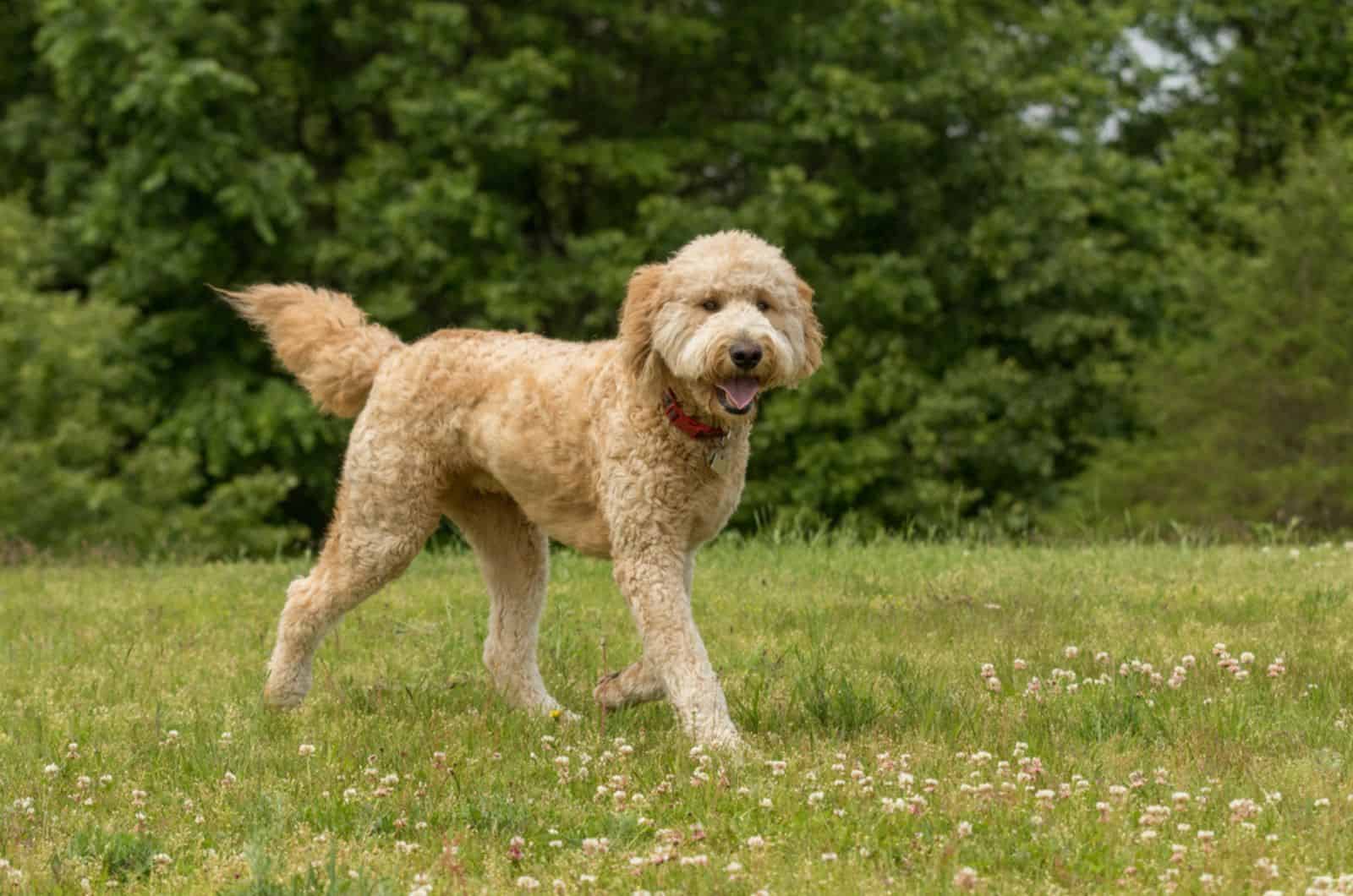
Apricot Goldendoodles have the same grooming requirements, just like any other type of Goldendoodle or Doodle breed in general.
Most groomers would agree that brushing is one of the essential grooming processes for all long-haired canines, especially Doodles such as Goldendoodles, Labradoodles, Sheepadoodles, and other Poodle mixes that have thick and curly hair.
An apricot Goldendoodle will require at least two to three brushing sessions per week, although I’d recommend you brush them on a daily basis as they easily get matted.
There are different types of brushes, and not all of them are suitable for your pup’s hair. That’s why it’s important to find the best brush for your Goldie Doodle, so you can groom them without any pain or discomfort.
When it comes to bathing, it’s not necessary to wash your pup as often as you brush them. Still, the frequency of bathing should be determined by the texture of the pup’s hair.
Apricot Goldendoodles that come with a curly type of coat should be bathed at least once every three weeks, while those with wavy and straight hair can be bathed once a month.
During bath time, you should be sure to use a shampoo that is suitable for Goldendoodles in order to maintain the moisture and health of your canine’s fur and skin.
Doggy wipes are an excellent option to use if you need to clean your pet’s skin or hair in between washing sessions. This step is strongly recommended to keep your pooch clean and healthy.
Are Apricot Goldendoodles Hypoallergenic?
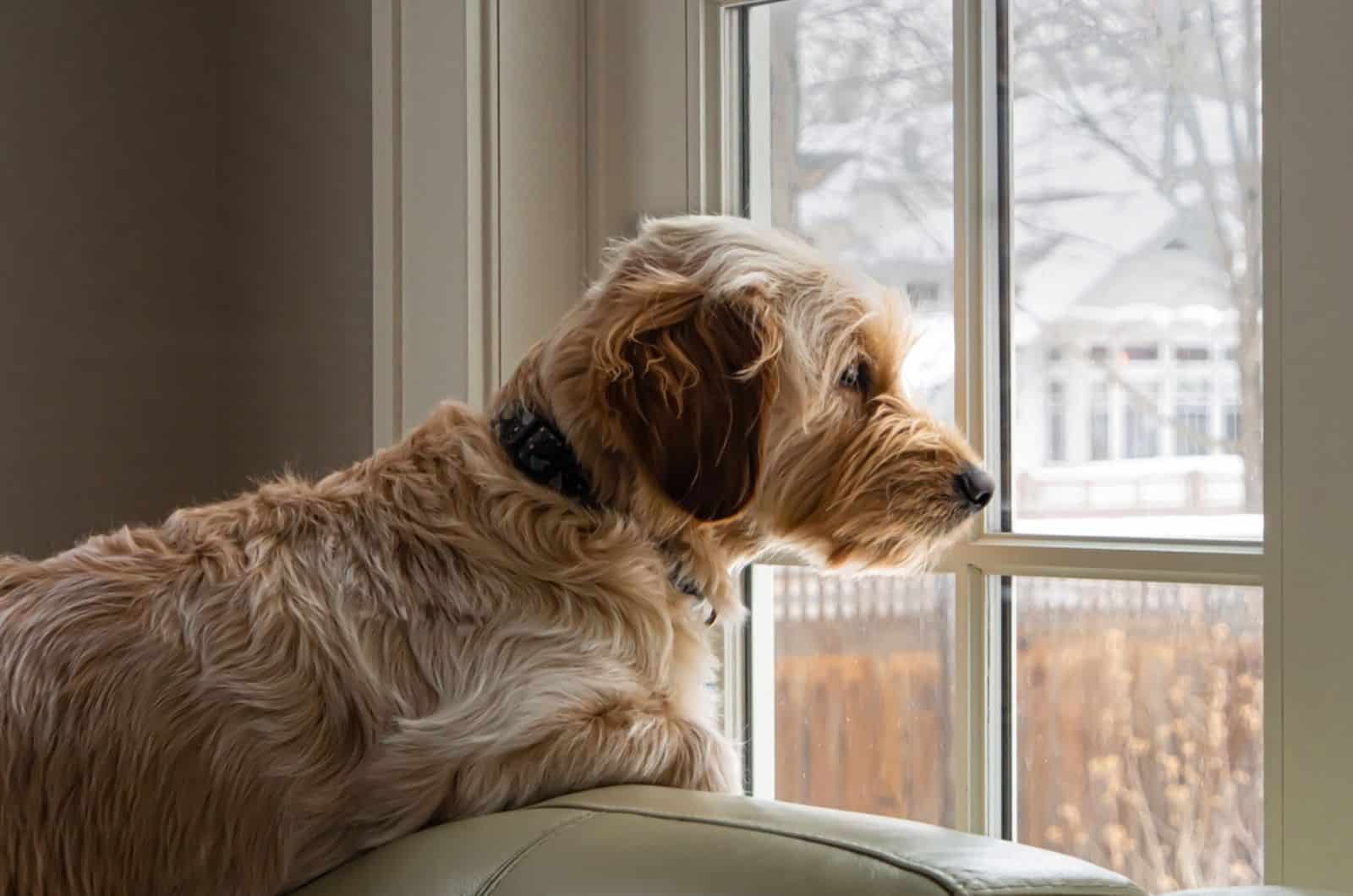
Apricot Goldendoodles are considered hypoallergenic pups, just like the majority of canines of this breed.
Their curly hair protects Apricot Goldendoodles from shedding their fur and dander that can trigger allergy responses in certain people.
If any of your family members suffer from allergies, but would still like to have this doggie as a furry family member, then Goldendoodles are a fantastic option.
FAQs
Goldendoodles come in a variety of colors, including apricot.
Here is the list of all shades these pups can come in:
• Red
• Silver
• Blue
• Black
• Chocolate
• Tan
• Champagne
• Black And White
• Gray
• Cream
• Silver Beige
• White
Phantom Goldendoodles and Sable Goldendoodles appear commonly as markings, but there might also be parti, merle, brindle, and other patterns included.
Goldendoodle colors are usually inherited from the Poodle parent, although chocolate, cream, and tan Goldendoodles might get the color gene from the Golden Retriever parent.
A great number of people mistake the apricot Goldendoodle for a red one because of the striking resemblance between these two types of Doods.
Even though they do belong to the same breed, and don’t have many differences in their temperament either, their coat isn’t completely the same.
If you’re not a color expert, it’s simple to understand why you would confuse the two as well.
The difference between these two shades is that the apricot Goldie Doodle has a peachy tone that looks more orange than the red hue.
On the other hand, the tone of the red Goldendoodle is much darker, and more comparable to that of an Irish Setter than a Standard Goldendoodle.
What makes them difficult to stand out from one another is the fact that both of these coat colors can come in different hues, so there might be both lighter and darker tones of each shade.
Apricot and red are not the same hue, and they should not be confused with one another in any way. All Goldendoodle breeders agree on this point, which is why they highlight the shades of all pups they produce.
It has not been proven yet that certain shades might have an impact on the pup’s health, which is why it can be said that there are no health conditions exclusively related to apricot Goldendoodles.
However, Goldendoodles can show a tendency towards developing certain medical conditions, most of which have a genetic background or are the results of an unhealthy diet and environmental conditions.
All in all, you don’t have to worry in case you get yourself an apricot Goldendoodle as there are no health issues caused by the color gene that they possess.
The price of Goldendoodles depends on several factors, including the colors of their coat.
For example, puppies that are colored in apricot shades usually cost about $1000 to $2000, while more uncommon pups, such as chocolate Goldendoodles, might cost up to $3000.
However, keep in mind that this is only the purchasing price of these doggies, and that there are plenty of other expenses you’ll have during their lifetime.
Vet bills, dog food, beds, harnesses, and other expenses will take a lot of money from a pet owner, but I’m sure that won’t be a big issue for any Goldendoodle lover.
These apricot beauties are adorable in every size they come in, but it’s necessary to mention which size you can expect your pup to be.
Some people aren’t so bothered by the size of their pet, while others specifically search for an apricot Goldendoodleof a certain size.
Toy apricot Goldies are the smallest Doods you’ll find as they usually grow between ten and sixteen inches. Ten-inch puppies are also known as petite Goldendoodles.
Mini Goldendoodles of apricot hue can grow up to twenty inches, while the standard ones grow up to 24 inches in height.
Final Thoughts
The Apricot Goldendoodle is indeed a wonderful pet that is beautiful inside and out. It will steal your heart in a matter of seconds with its peachy looks.
If you prefer puppies in lighter shades, then apricot Goldie Doodles might be just what you’re looking for, especially for people who might have mild allergic reactions to dog hair.
The apricot Goldendoodle doesn’t differ much from its relatives in other shades, especially in terms of temperament and health condition.
There’s one thing I’m sure of… whatever color of Goldendoodle you choose, you won’t regret it!
READ NEXT:
The Ultimate Guide To The Flat-Coat Goldendoodle
15 Best Goldendoodle Haircuts (With Pictures)
F1 Mini Goldendoodle: All About This Adorable Dog















